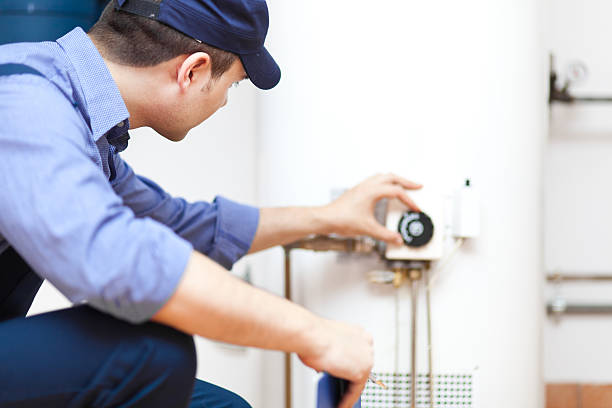A water heater is one of the most essential appliances in any home. It provides the hot water needed for showers, laundry, dishwashing, and more. But like all appliances, water heaters have a limited lifespan. Whether your unit has failed or is simply outdated, replacing your water heater is a crucial decision that impacts your comfort, utility bills, and household efficiency. This article offers a comprehensive guide to water heater replacement—covering when to replace it, what types are available, and what to expect during the process.
When Should You Replace Your Water Heater?
Most traditional water heaters have a lifespan of 8 to 12 years, while tankless models can last 15 to 20 years with proper maintenance. Signs that it may be time for a replacement include:
- Lack of hot water: If your hot water supply is inconsistent or runs out quickly, your unit may be failing.
- Age of the unit: If your water heater is over a decade old, it’s likely nearing the end of its life.
- Rusty or discolored water: This can indicate corrosion inside the tank.
- Leaks: Water pooling around the base of the heater is a sure sign of internal damage.
- Unusual noises: Popping or rumbling sounds could indicate sediment buildup and decreased efficiency.
- High energy bills: Older heaters are less energy-efficient and may be costing you more each month.
Replacing your water heater before a total breakdown can save you from unexpected disruptions and costly emergency repairs.
Types of Water Heaters to Consider
When replacing your water heater, it’s an excellent opportunity to consider upgrading to a more efficient or better-sized unit. The main types of water heaters include:
1. Storage Tank Water Heaters
- How they work: Store and heat a tank of water, typically 30–80 gallons.
- Pros: Lower upfront cost, simple installation.
- Cons: Less efficient due to standby heat loss.
2. Tankless (On-Demand) Water Heaters
- How they work: Heat water only as needed, without storing it.
- Pros: Energy efficient, compact size, endless hot water.
- Cons: Higher initial cost, may require system upgrades.
3. Heat Pump Water Heaters (Hybrid)
- How they work: Use electricity to move heat from the air to the water.
- Pros: Highly efficient, lower long-term operating costs.
- Cons: Require more space and may be less effective in cold climates.
4. Solar Water Heaters
- How they work: Use solar energy to heat water, usually with a backup electric or gas system.
- Pros: Environmentally friendly, potential energy savings.
- Cons: Expensive to install, dependent on climate and sunlight.
Choosing the right type depends on your household size, energy source (gas or electric), climate, and budget.
Sizing Your New Water Heater
Proper sizing is essential to ensure your water heater meets your home’s hot water needs. For tank heaters, consider:
- 1–2 people: 30–40 gallons
- 3–4 people: 40–50 gallons
- 5+ people: 50–80 gallons
Tankless units are sized by flow rate (gallons per minute) rather than capacity. A professional installer can help determine the best size for your household.
The Replacement Process
Whether you hire a professional or attempt a DIY replacement, the process generally includes the following steps:
1. Shut Off Utilities
Turn off the water supply and disconnect the power source—electricity or gas.
2. Drain the Old Tank
Connect a hose to the drain valve to empty the water heater. Open a hot water tap to release pressure and allow air into the system.
3. Disconnect and Remove the Old Unit
Carefully disconnect water, electrical, and/or gas lines. Remove the unit and dispose of it according to local regulations.
4. Position and Connect the New Heater
Install the new unit in place, ensuring proper clearance and venting. Connect the water lines, pressure relief valve, and energy source.
5. Test the System
Fill the tank, check for leaks, and restore power. Set the thermostat to 120°F for safety and efficiency.
For tankless systems or complex replacements (like switching energy sources), hiring a licensed plumber or HVAC technician is strongly recommended.
Cost of Water Heater Replacement
The total cost depends on the type of water heater and complexity of installation:
- Standard Tank Heater: $500–$1,500 installed
- Tankless Water Heater: $1,500–$3,500 installed
- Heat Pump Water Heater: $1,200–$3,000
- Solar Water Heater: $3,000–$7,000+
Additional costs may include permit fees, disposal of the old unit, plumbing upgrades, or electrical work.
Energy Efficiency and Long-Term Savings
Modern water heaters are far more energy-efficient than older models. Look for units with the Energy Star® label and high Uniform Energy Factor (UEF) ratings. Tankless and hybrid systems can reduce energy consumption by up to 30%, offering significant long-term savings on utility bills.
Hiring a Professional vs. DIY
While replacing a water heater may seem straightforward, it involves water, electricity, and possibly gas—each requiring precise handling. Consider hiring a licensed plumber or contractor if:
- You’re changing fuel types (electric to gas or vice versa)
- You need to upgrade ventilation or plumbing
- Local codes require permits and inspections
- You’re installing a tankless or hybrid system
Professionals ensure proper installation, compliance with codes, and manufacturer warranty protection.
Conclusion
Replacement hot water heater in Indianapolis is a crucial home improvement project that ensures comfort, efficiency, and peace of mind. By understanding when to replace your unit, selecting the right model, and ensuring a proper installation, you can enjoy consistent hot water and lower utility bills for years to come. Whether you choose a traditional tank model or upgrade to a high-efficiency system, investing in a new water heater is a smart step toward a more comfortable and energy-efficient home.




